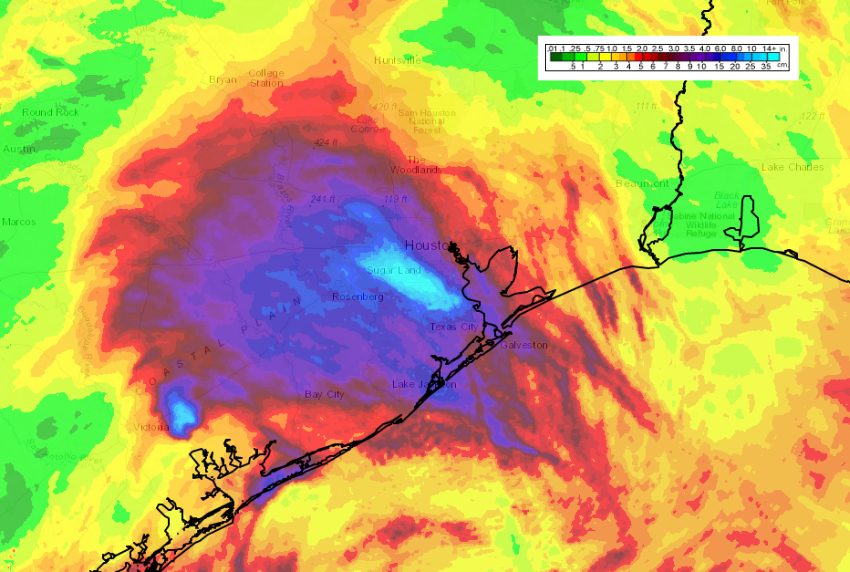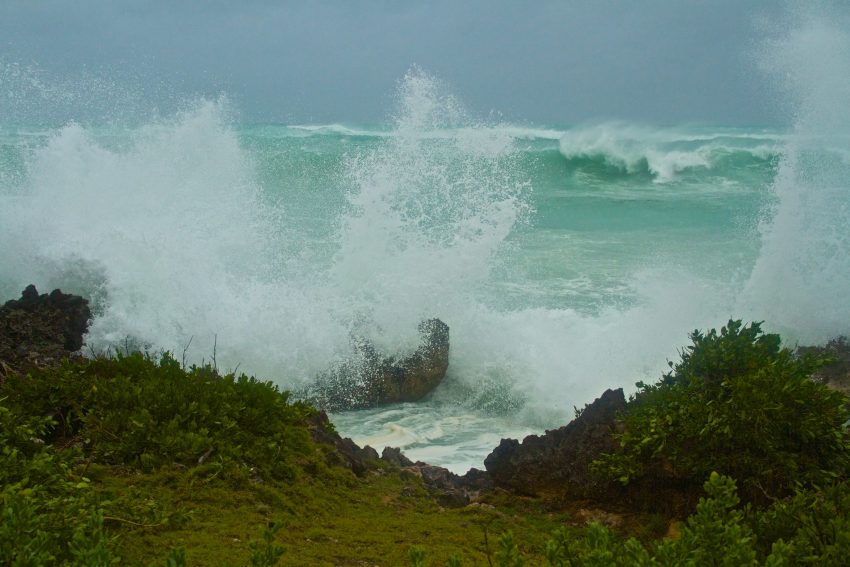An extremely active tropical cyclone period seems to be winding down. As of tonight (Tuesday, 22-Sept) there are no more active tropical cyclones in the Atlantic Basin, and none expected in the next several days. However, two post-tropical storms will continue to cause major issues through Wednesday.

Post-tropical storm Beta has been drifting slowly near or along the western Gulf Coast for the past several days. When it made landfall on Monday night, it was the ninth named storm of the season to do so, tying a record for the most active season with plenty of time to break it. Although damage due to wind or storm surge has generally been slight, Beta has dumped torrential rain across much of southeast Texas. Parts of the Houston metro have seen 7-14 inches (175-350 mm) of rain since the weekend (see map above). Serious flash flooding has been result, closing down major highways and interstates and requiring numerous water rescues of stranded vehicles. This excess rainfall has already and will continue to cause dangerous rises in area creeks and rivers. Fortunately, Beta is beginning to weaken and move more quickly, reducing the flash flood threat going forward.
High water rescue vehicles have arrived along 288 and I-610 for motorists stranded over 60-mins. #Beta #Houston #houwx pic.twitter.com/TftU1awyla
— Steve Dresner (@stevedresner) September 22, 2020
Hurricane Teddy peaked at Category Four intensity last week while moving over the open Atlantic. Fortunately, Teddy has thus far managed to avoid any serious direct impacts to land, although it brushed the island of Bermuda with gusty winds and rain. Teddy has, however, pushed high waves and elevated tides far ahead of its circulation. The entire eastern seaboard of the U.S. has seen this kind of rough surf over the past few days (see tweet video below from Maine). Teddy has transitioned to a post-tropical storm, but an extremely large and powerful one. Hurricane-like conditions are affecting portions of coastal Nova Scotia with Newfoundland likely the next target on Wednesday. Lead photo courtesy flickr users Lee and Chantelle McArthur.
High tide in Wells, ME. #Teddy #mewx @StormHour @spann pic.twitter.com/N9JK61gyMS
— Ryan Breton (@RyanBretonWX) September 22, 2020
